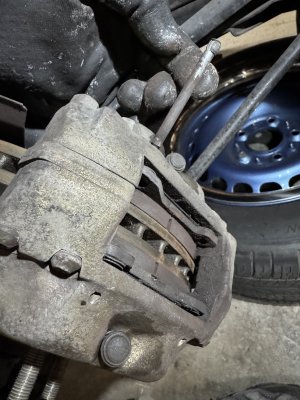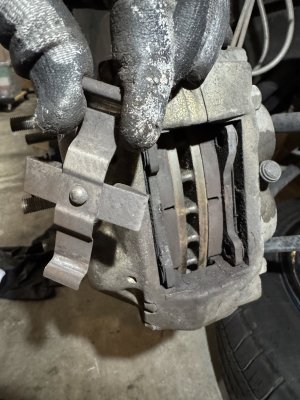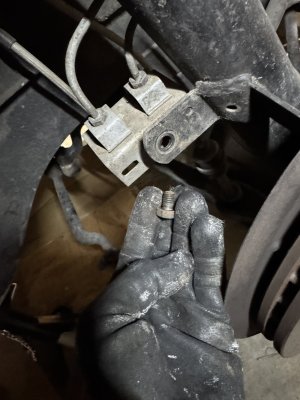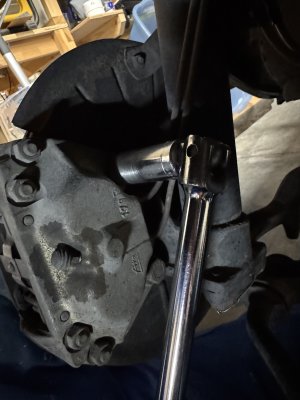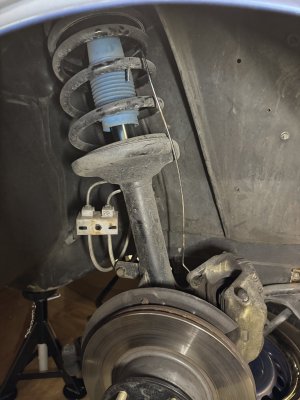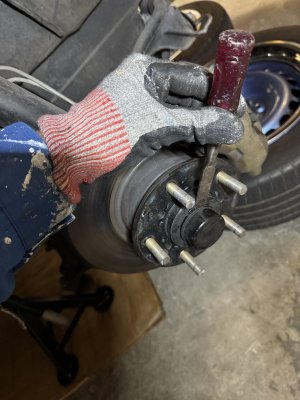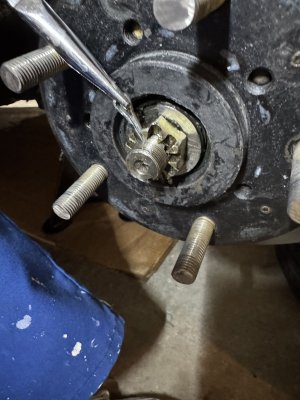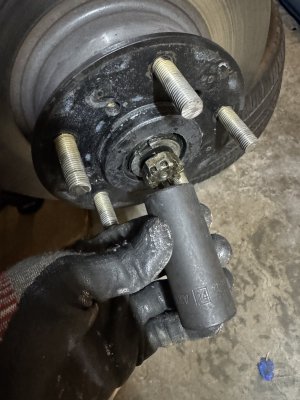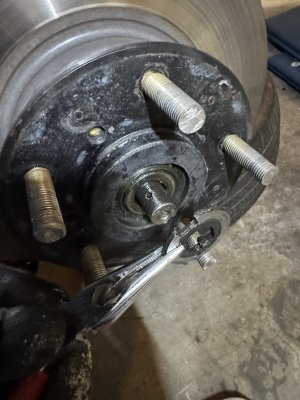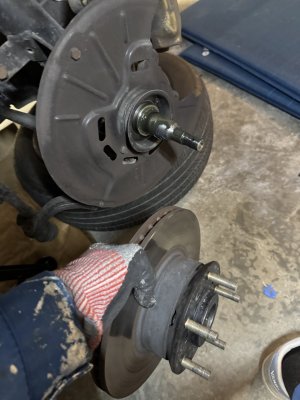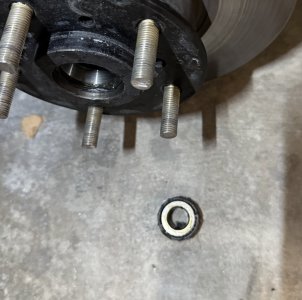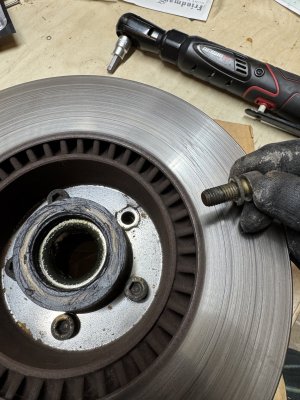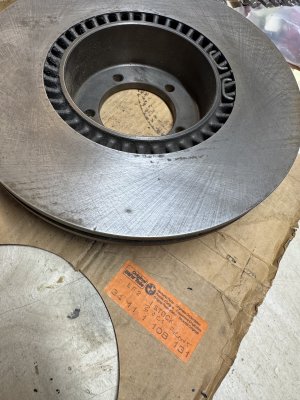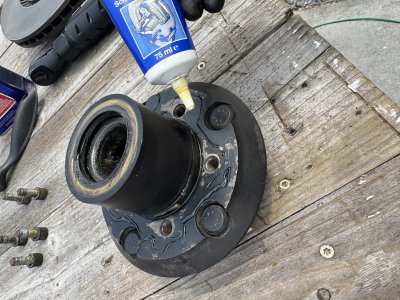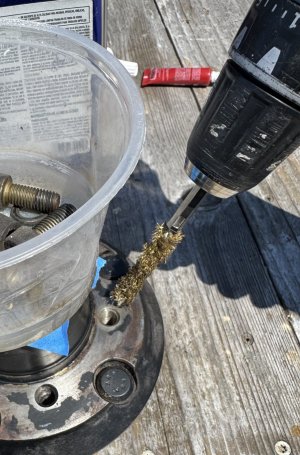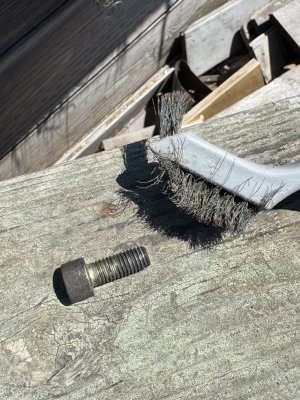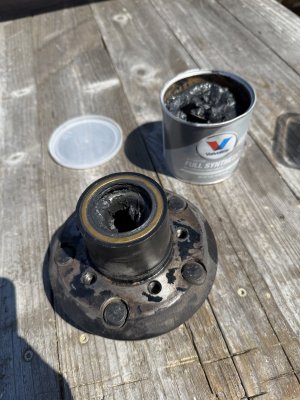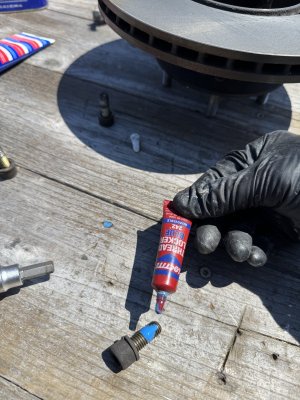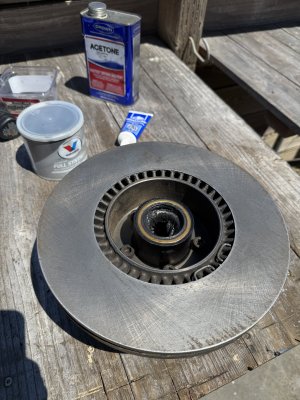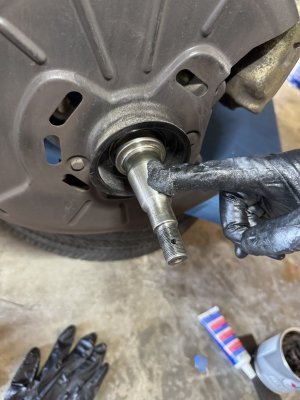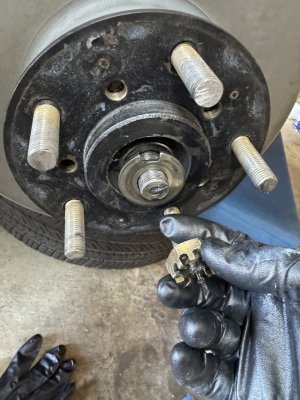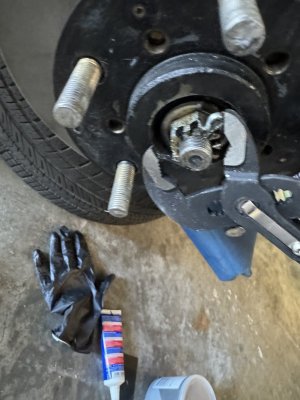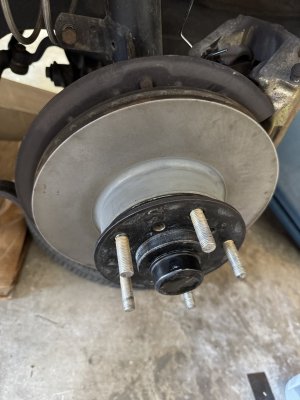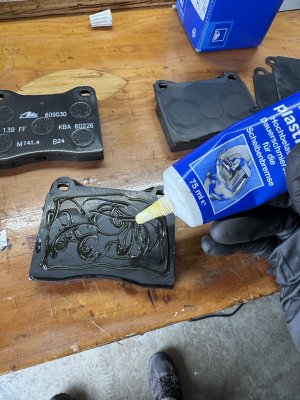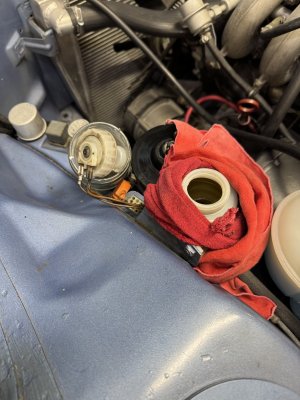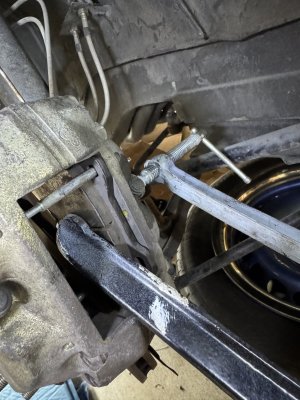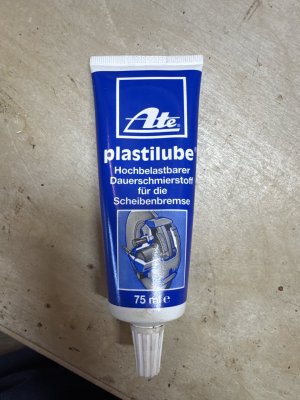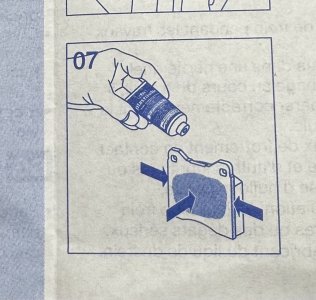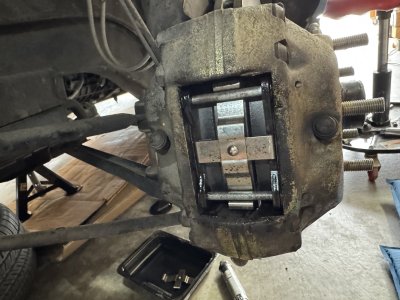Basic maintenance time. Front discs!
(Writing this down bc it had been a long time since I had done it and I had forgotten several steps)
Items needed:
- New discs BMW # 34 11 1 108 131
- New pads ATE # 609030
- Brake cleaning fluid
- Wheel bearing grease
- Blue Loctite
- Copper grease or equivalent brake pad lubrication
- Possibly new brake fluid if you do a top up or bleed
Tools needed:
- Sturdy jackstands
- Breaker bar with short 19 mm socket for caliper bolts
- Ratchet and deep 13 mm socket for the break line bracket
- 24 mm socket for the castellated nut
- 8 mm hex key to attach the disc onto the hub
- Needle nose pliers for the cotter pin
- A brake pad spreader will make inserting the new pads much easier. ($40 on Amazon) If not you can use a C clamp but it is pretty hard because you have to hold that caliper in one hand while trying to tighten that dangling C clamp with another
- Torque wrench
- Chisel and mallet for prying the wheel bearing dust cup out
- Disposable gloves
- Coat hanger or similar to hold the caliper while it is out
- Lights. I use 2 kinds: One magnet I can stick inside the wheel well pointed at the work. And one flexible headband type that lights where I am looking
- Nylon bristle brush to clean up the parts
- Brass bristle "pipe cleaner" type of tool to clean bolt holes
- A couple of different small containers to hold the parts that are being taken out gloves because things are going to get dirty
- Lots of shop towels
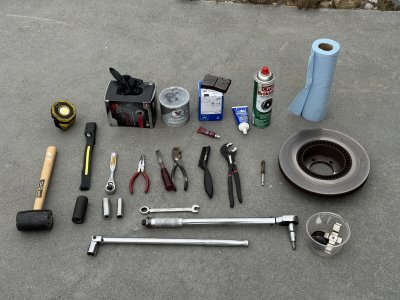
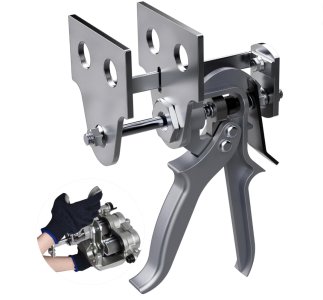
(Writing this down bc it had been a long time since I had done it and I had forgotten several steps)
Items needed:
- New discs BMW # 34 11 1 108 131
- New pads ATE # 609030
- Brake cleaning fluid
- Wheel bearing grease
- Blue Loctite
- Copper grease or equivalent brake pad lubrication
- Possibly new brake fluid if you do a top up or bleed
Tools needed:
- Sturdy jackstands
- Breaker bar with short 19 mm socket for caliper bolts
- Ratchet and deep 13 mm socket for the break line bracket
- 24 mm socket for the castellated nut
- 8 mm hex key to attach the disc onto the hub
- Needle nose pliers for the cotter pin
- A brake pad spreader will make inserting the new pads much easier. ($40 on Amazon) If not you can use a C clamp but it is pretty hard because you have to hold that caliper in one hand while trying to tighten that dangling C clamp with another
- Torque wrench
- Chisel and mallet for prying the wheel bearing dust cup out
- Disposable gloves
- Coat hanger or similar to hold the caliper while it is out
- Lights. I use 2 kinds: One magnet I can stick inside the wheel well pointed at the work. And one flexible headband type that lights where I am looking
- Nylon bristle brush to clean up the parts
- Brass bristle "pipe cleaner" type of tool to clean bolt holes
- A couple of different small containers to hold the parts that are being taken out gloves because things are going to get dirty
- Lots of shop towels


Last edited:

